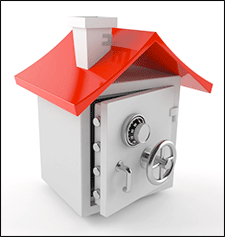IRVINE, Calif. – Jan. 29, 2015 – Where should property investors park their money to achieve the greatest return on investment?
According to RealtyTrac's first quarter 2015 Residential Property Rental Report, Florida's top markets, depending on the age of renters, are located outside major urban areas. The study breaks out top markets by generation, including millennials, Generation Xers and baby boomers. It also includes a list of the U.S. markets where rents increased by at least 10 percent year-to-year, and "safe havens" – markets where economic conditions make real estate investment relatively safe.
"There is still plenty of opportunity in the U.S. housing market for single family rental investors employing a variety of investing strategies," says Daren Blomquist, vice president at RealtyTrac. "Whether focusing on markets where homeownership-shy millennials are migrating, markets where recovering Gen X homeowners-turned-renters are prevalent, or markets where baby boomers are testing for retirement, investors can find good options with solid potential rental returns."
However, Blomquist says some markets no longer offer a significant return to investors "because of rapidly rising prices over the past few years. Savvy single family rental investors will tread cautiously in such markets despite the siren song of strong home price appreciation."
Best overall markets for buying residential rentals
The nation's highest potential return on investment, according to RealtyTrac, is in Clayton County, Ga., near Atlanta with a 25.83 percent projected return. However, four Florida cities made the top-20 list:
7. Pasco County: Annual gross yield: 17.86%
8. Hernando County: Annual gross yield: 17.86%
12. Marion County: Annual gross yield: 16.88%
19. Citrus County: Annual gross yield: 15.30%
Best markets for renting to millennials
Among the 516 counties RealtyTrac analyzed, 50 had a millennial share of the population above the national average of 22 percent and potential annual rental returns on residential properties of 9 percent or higher.
However, only one Florida county made the top-10 list for residential real estate investment to millennials: Duval County, with an annual gross yield of 13.16 percent, and a growth in the number of millennials (2007 to 2013) of 19.18 percent, ranked ninth.
Best markets for renting to Gen Xers
Twenty U.S. counties had Generation X shares (adults born between 1965 and 1976) above the national average of 16 percent with potential annual rental returns on residential properties at 9 percent or higher.
For Gen X rental investment, two Florida counties made the top 10 list: Clay County (No. 4) with an annual gross yield of 11.88 percent and growth of Gen X (between 2007 and 2013) of 5.14 percent; and Osceola County (No. 9) with an annual gross yield of 11.40 percent and Gen X growth of 8.35 percent over the same timeframe.
Best markets for renting to baby boomers
RealtyTrac found 40 markets where the Baby Boomer share of the population was above the national average of 25 percent – many in Florida – where potential annual rental returns on residential properties are 9 percent or higher.
Six Florida counties made the top 10 list including:
1. Hernando County: Annual gross yield 17.86%; increase in baby boomers (2007 to 2013) of 31.45%
2. Pasco County: Annual gross yield 17.86%; increase in baby boomers 17.10%
3. Marion County: Annual gross yield 16.88%; increase in baby boomers 31.95%
5. Citrus County: Annual gross yield 15.30%; increase in baby boomers 35.64%
8. St. Lucie County: Annual gross yield 12.39%; increase in baby boomers 29.39%
9. Volusia County: Annual gross yield 12.29%; increase in baby boomers 17.25%
Markets with the biggest rent increases over the past year
Among all counties analyzed, the average fair market rent for a three-bedroom property was up 2 percent in 2014. Fair market rents on three-bedroom properties increased 10 percent or more from 2014 to 2015 in 35 counties. RealtyTrac found only one Florida county with returns above 10 percent: Sumter County, No. 34, at 10.18 percent.
Safe haven rental markets
According to RealtyTrac, a safe haven rental market has an unemployment rate below the national average of 5.6 percent and annual rental returns of 10 percent or higher.
One Florida county made the top 10: Broward County, with an annual gross yield of 13.10 percent.
Source: Florida Realtors®





















